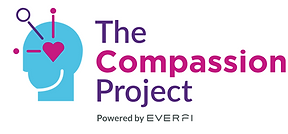Kindness in the Workplace
Acts of Kindness Maine is available to provide activities in the workplace, ranging from one-time workshops, lunchtime discussion groups, or keynote talks to more comprehensive programs, such as formation of Kindness Teams, creation of organizational kindness goals and strategies, kindness-based diversity programs, and kindness in Human Resources. All of our programs are provided at no cost. Contact us at aokmaine@gmail.com. Some resources on Kindness in the Workplace are here:

Making Kindness A Priority In The Workplace
Kindness is not always seen as a priority in the workplace, especially as it can contrast with the traditional image of a successful entrepreneur. Haven't we been told that "nice people finish last?" Office culture can be cutthroat and competitive, leading to hurtful criticism, lack of collaboration, and miscommunication.
However, now we are increasingly talking about wellbeing in the workplace, and bringing an authentic quality to our work, being gentle with ourselves, and with others around us.
A new study in the journal Emotion looks at acts of kindness within a real-life working environment and shows how kindness really does create a positive ripple that affects the whole workplace culture. This study has shown that generosity and kindness propagates and spreads.

Don’t Underestimate the Power of Kindness at Work
The transformation of the workplace into scheduled online meetings has led to another source of deprivation: The removal of serendipitous encounters. For many people, hearing a colleague say, “Thank you so much” in the hallway, or a manager telling you “Great job” after a presentation were a highlight of office life. Now, these seem like traditions from another lifetime. Without water cooler interactions, casual lunches, and coffee breaks with colleagues, we don’t have the same opportunities for social connection as before. Without them, it can be much harder to find joy in our work. So, what can we do about it?
We offer a humble suggestion: Kindness. This past year, most management advice has focused on how to sustain productivity during the pandemic, yet the power of kindness has been largely overlooked. Practicing kindness by giving compliments and recognition has the power to transform our remote workplace.

How To Create A Culture Of Kindness In The Workplace (Business Leadership Today)
Love (or kindness) and connection are two universal human needs. These, along with other values like trust, respect, safety and acceptance, help us to thrive and feel fulfilled, but where do they fit in a workplace environment? Do leaders and managers do enough to foster and encourage kindness and meaningful connection at work?

Kindness In The Workplace (Born This Way Foundation)
On behalf of Born This Way Foundation and Indeed, Benenson Strategy Group conducted 1,200 online interviews (from February 24 to March 1, 2022) with 18-29 year olds who are currently or soon-to-be employed across the United States. The survey included oversamples of Black, Indigenous, and People of Color (BIPOC) and LGBTQ+ individuals. The following report shares insights directly from young people about the importance of kind workplaces and access to mental health resources, and reveals respondents want to work for employers who publicly value kindness and mental health.

20 Acts of Kindness to Do in the Workplace
Performing acts of kindness in the workplace isn’t just something that’s nice to do—being kind in the workplace builds connection and contributes to a better organizational culture. And a strong company culture leads to higher employee engagement, increased job satisfaction, and even improved bottom line results.

Leadership: why kindness is an underrated quality at work
Love (or kindness) and connection are two universal human needs. These, along with other values like trust, respect, safety and acceptance, help us to thrive and feel fulfilled, but where do they fit in a workplace environment? Do leaders and managers do enough to foster and encourage kindness and meaningful connection at work?

The Kindness Case for Diversity: 3 Ways to Incorporate Kindness in Your Work
We [need] to recognize - vitally, I think - that kindness and inclusion are inseparable and that empathy-based strategies are key when engaging people in change work. And not only in training but in meetings, conversations, and strategy planning.
This is part of the growing recognition of the need to be comfortable with our own and others' emotional expression and to develop emotional literacy as part of diversity education.

Kindness in the Workplace: Diversity, Equity, and Inclusion
Most business leaders know that Diversity, Equity, and Inclusion in the workplace are areas on which they should focus. Often, they are overwhelmed as to where to start. So, start with kindness. Kindness is defined as a type of behavior marked by acts of generosity, consideration, or concern for others, without expecting praise or reward.
Here are some simple steps you can take to bring true kindness to all people in your workplace..

Why Kindness Is Key To Living More Inclusively
“Be kind, be safe and make good choices.”
That is my four-year-old daughter’s preschool credo. Simple, yet powerful, and just as relevant in the workplace. It makes me wonder why a message we teach our children does not translate into adulthood. There really is beauty in such simplicity, it just requires consistency and intentionality.
The same logic applies to effective inclusion, diversity and equity. A core purpose of every organization should be to create a safe, welcoming environment that embodies human kindness and fosters a culture of support and collaboration. It’s simple but it’s not easy. It’s about being deliberate.

RE-BRANDING DEI TO "A CULTURE OF KINDNESS"
DEI. Diversity, equity, and inclusion. For some, these words cause immense resistance, striking discomfort, fear, and even anger into them! How can we implement DEI and avoid this knee-jerk reaction of resistance? After all, many people—even if they oppose DEI as a project—are not opposed to DEI’s core idea: kindness. So, what can we do with this information?
DEI might benefit from a rebranding! Rather than overly emphasizing the term “DEI” itself, we can discuss DEI as a culture of kindness. In doing so, we communicate the core message of DEI—compassion, empathy, and respect through the creation of welcoming environments—without losing the attention of those who may feel more resistant to “DEI” as a term.

Why diversity, equity and inclusion need compassion at their core
“Compassion is about how to see the world from someone else’s perspective – it’s empathy plus action – and this is sometimes lacking, or missed as a cornerstone of efforts, when we talk about DEI nowadays.
“Too often, we talk about diversity, equity and inclusion in terms of what we shouldn’t be doing, but to understand why some actions are not inclusive and might actually harm another person and an environment of equity and inclusion within an organization, we need compassion. DEI needs to be reframed with compassion at its core.”

Shame Is Stalling Diversity And Inclusion Success: Here’s Why
Diversity and inclusion efforts should be core to the majority of businesses - from ensuring that scaling happens with different perspectives in mind, creating technologies that are accessible for everyone and providing environments for everyone to succeed, not just those within the majority in your organization. We know that businesses embracing diversity and fostering inclusion are better for business, so what’s holding back many organisations?
The truth? It is the avoidance of difficult conversations because of the worry that people will feel shame.

“Blaming and Shaming” Doesn’t Work. This Approach to DEI Does
Far too many approaches to DEI actually alienate participants and even create backlash rather than supporting meaningful conversations and mutual learning. In such cases, DEI training and programs can be — at best — useless, and at worst, actually counterproductive and harmful to the organization as a whole and leaders as individuals.
Instead of reactions like, “Oh no, not another diversity training program! I wonder who messed up this time,” it is possible to create a completely different atmosphere of mutual respect and shared learning. Here are a few guiding principles...